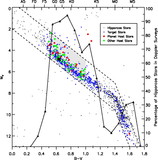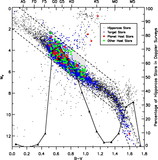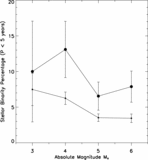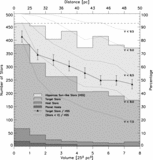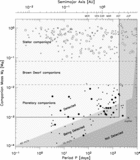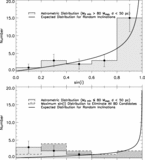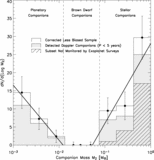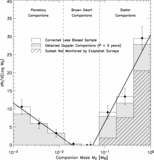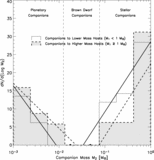Image Details
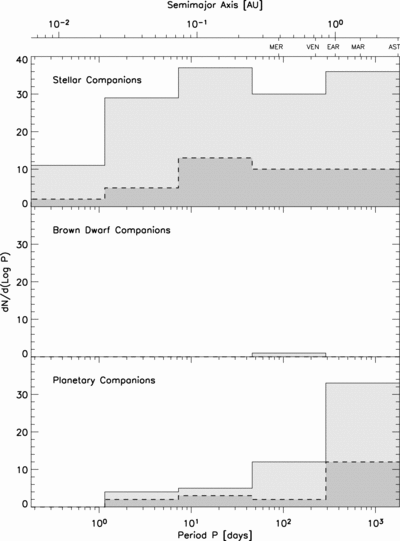
Caption: Fig. 6.
Projection of Fig. 5 onto the period axis for the 25 (dark gray) and 50 pc (light gray) samples. Planets are more clumped toward higher periods than are stellar companions. This would be a selection effect with no significance if the efficiency of finding short period stellar companions with the low‐precision Doppler technique used to find spectroscopic binaries, was much higher than the efficiency of finding exoplanets with high‐precision spectroscopy. Konacki et al. (2004) and Pont et al. (2004) conclude that the fact that the transit photometry method has found planets in sub‐2.5 day periods (while the Doppler method has found none) is due to higher efficiency for small periods and many more target stars and thus that these two observations do not conflict. Thus, there seems to be a real difference in the period distributions of stellar and planetary companions.
Copyright and Terms & Conditions
© 2006. The American Astronomical Society. All rights reserved. Printed in U.S.A.


